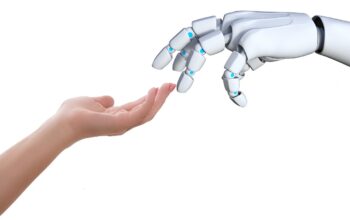Introduction to AI Trends
Artificial Intelligence (AI) is no longer just a technology buzzword; it’s changing how businesses operate and how we live our daily lives. With advancements like no-code AI, natural language processing, and AI-driven software testing, industries are experiencing a significant shift. Let’s explore some of the most notable AI trends that are shaping our future.
1. No-Code AI
No-code AI solutions are making it easier for businesses to adopt AI without needing a team of data scientists. This means companies can integrate AI into their systems using simple interfaces, which significantly simplifies the process of deploying AI tools. For instance, firms like Axtraction AI offer API-driven solutions that enable seamless integration of AI into existing frameworks, allowing businesses to harness the power of AI without extensive technical expertise.
2. AI Advances in NLP
Natural Language Processing (NLP) is becoming more sophisticated, enabling AI systems to better understand and generate human-like language. This advancement has led to more intelligent chatbots, virtual assistants, and language translation services. For example, NLP helps businesses analyze customer feedback more effectively, allowing them to tailor their products and services to meet consumer needs.
3. AI-Powered Software Testing
AI-driven software testing is revolutionizing the way companies ensure the quality of their software. By automating test cases and predicting potential defects early in the development process, AI helps reduce manual effort and enhances overall efficiency. This automation also allows for more accurate performance testing, mimicking real-user behavior to identify bottlenecks and improve software reliability.
4. AI Personalization
AI is empowering businesses to provide personalized recommendations and interactions. Companies like Netflix use AI algorithms to suggest movies and shows based on user preferences, enhancing the user experience and increasing customer engagement. This personalization trend is spreading across industries, from marketing to customer service, making interactions more human-like.
5. Multimodal AI Experiences
Lastly, multimodal AI experiences are making it easier for people to interact with AI tools. This involves using multiple senses (like sight and sound) simultaneously to make interfaces more intuitive and user-friendly. This trend is critical for the future as it makes AI more accessible to a broader audience.
Conclusion
As AI continues to evolve, it’s becoming clear that these technologies will be integral to various industries. Whether it’s through automation, improved customer interactions, or streamlined workflows, AI is set to fundamentally change how we work and live.
References:
- https://www.zdnet.com/article/the-best-ai-for-coding-in-2025-including-two-new-top-picks-and-what-not-to-use/
- https://axtraction.ai/trends-and-insights/ai-technology-and-innovation/ai-trends-2025
- https://explodingtopics.com/blog/ai-statistics
- https://www.frugaltesting.com/blog/top-ai-software-testing-services-to-consider-in-2025
- https://litslink.com/blog/ai-trends
- https://en.wikipedia.org/wiki/Applications_of_artificial_intelligence
- https://mobidev.biz/blog/future-artificial-intelligence-technology-ai-trends
- https://www.simplilearn.com/challenges-of-artificial-intelligence-article



